7 Best Natural Gas Regulators for Efficient Energy Management Globally
As global energy demands continue to rise, the role of natural gas in the energy mix becomes increasingly significant. According to the International Energy Agency (IEA), natural gas is projected to account for almost 25% of the global energy supply by 2040, largely due to its cleaner-burning properties compared to coal and oil. This surge in usage necessitates effective energy management solutions, among which natural gas regulators play a critical role. These devices not only ensure the safe and efficient distribution of gas but also contribute to reducing emissions and optimizing consumption in various sectors. In this blog, we will explore the seven best natural gas regulators, highlighting their features and benefits to enhance energy efficiency and sustainability on a global scale.

The Importance of Natural Gas Regulators in Global Energy Efficiency
Natural gas regulators play a crucial role in enhancing global energy efficiency by ensuring the safe and effective distribution of gas across various infrastructures. As the world shifts towards cleaner energy sources, these regulators not only control the pressure and flow of natural gas but also contribute significantly to reducing energy waste and emissions. Efficient regulations facilitate the optimal performance of heating systems, industrial processes, and power generation, ultimately leading to a more sustainable energy landscape.
Moreover, the importance of natural gas regulators extends beyond just safety and efficiency. They enable the integration of renewable energy sources with existing natural gas infrastructure, promoting a balanced energy mix. By providing consistent pressure and flow, regulators allow for the seamless transition between gas and alternative energy sources, which is vital for countries aiming to meet ambitious climate goals. Investors and policymakers should prioritize the deployment of advanced gas regulation technologies to enhance energy management strategies globally, ensuring a more resilient and eco-friendly energy future.
7 Best Natural Gas Regulators for Efficient Energy Management Globally
| Regulator Type | Pressure Range (psi) | Flow Capacity (SCFH) | Material | Temperature Range (°F) | Applications |
|---|---|---|---|---|---|
| Single-Stage Regulator | 0-10 | 1,000 | Aluminum | -20 to 120 | Residential heating |
| Two-Stage Regulator | 10-30 | 2,500 | Stainless Steel | -40 to 150 | Industrial usage |
| Electronic Regulator | 0-60 | 5,000 | Brass | -20 to 140 | Smart home systems |
| High-Pressure Regulator | 30-100 | 10,000 | Carbon Steel | -40 to 200 | Commercial heating |
| Automatic Reset Regulator | 0-30 | 1,200 | Plastic | -10 to 130 | Heating appliances |
| Fuel Regulator | 0-20 | 3,000 | Metal Alloy | -30 to 160 | Generators |
| Pressure Reducing Valve | 0-50 | 2,000 | Bronze | -40 to 140 | Pipeline systems |
Key Features to Look for in Natural Gas Regulators for Optimal Performance
When choosing natural gas regulators for optimal performance, several key features ought to be prioritized. First and foremost, accuracy in pressure regulation is essential. High-quality regulators maintain consistent output pressure, ensuring that appliances operate efficiently without the risk of overpressure, which can lead to equipment damage or hazardous situations. Look for regulators with advanced technology that enables precise adjustments, allowing them to adapt to varying gas demands seamlessly.
Another critical feature is durability and resistance to environmental factors. Natural gas regulators are often exposed to challenging conditions, and selecting models that withstand rust, corrosion, and extreme temperatures can significantly extend their lifespan. Materials such as stainless steel or specially coated alloys provide enhanced durability. Additionally, consider regulators equipped with safety mechanisms, such as overpressure protection and integrated shut-off valves, which can prevent accidents and provide peace of mind during operation. By focusing on these vital aspects, you can ensure that your natural gas regulators will function reliably and efficiently for your energy management needs.
Natural Gas Regulators Performance Comparison
This chart presents the efficiency ratings of various natural gas regulators, showcasing their performance in energy management. A higher rating indicates better efficiency in regulating natural gas supply.
Comparative Analysis of Leading Natural Gas Regulators: Efficiency Metrics and Ratings
When evaluating the best natural gas regulators for efficient energy management, a comparative analysis reveals significant variations in efficiency metrics and ratings among leading models. According to the International Energy Agency (IEA), advanced regulators can improve gas flow stability by up to 15%, which is crucial for optimizing energy consumption and reducing operational costs. Some of the best-performing regulators not only enhance efficiency but also incorporate smart technology that facilitates better monitoring and control of gas distribution.
Tip: Always consider the energy loss percentages reported in the specifications when selecting a natural gas regulator. Models with lower energy loss rates are not only more efficient but can also lead to substantial cost savings over time. Additionally, regular maintenance of these regulators is essential for sustaining their performance and ensuring safe operations.
Another critical factor in choosing the right natural gas regulator is the device's ability to adapt to varying pressure conditions. Recent studies from the Gas Technology Institute emphasize that regulators equipped with adaptive technology can mitigate fluctuations, thus preserving energy integrity and enhancing system reliability. This adaptability is particularly beneficial in regions with inconsistent supply pressures.
Tip: Look for regulators that offer real-time data analytics capabilities. By utilizing these insights, operators can make informed decisions and proactively address efficiency gaps, potentially reducing gas consumption by up to 20%.
Impact of Advanced Technology on Natural Gas Regulation and Energy Management
 The integration of advanced technology into natural gas regulation is reshaping energy management practices across the globe. Recent reports indicate that the adoption of smart sensors and AI-driven analytics has enhanced the efficiency of monitoring and controlling natural gas distribution systems. According to a report by the International Energy Agency (IEA), implementing these technologies can reduce gas leakages by up to 30%, significantly decreasing operational costs and increasing energy efficiency. The data-driven approach allows for real-time assessments, leading to proactive maintenance and optimization of gas networks, ultimately supporting a more sustainable energy future.
The integration of advanced technology into natural gas regulation is reshaping energy management practices across the globe. Recent reports indicate that the adoption of smart sensors and AI-driven analytics has enhanced the efficiency of monitoring and controlling natural gas distribution systems. According to a report by the International Energy Agency (IEA), implementing these technologies can reduce gas leakages by up to 30%, significantly decreasing operational costs and increasing energy efficiency. The data-driven approach allows for real-time assessments, leading to proactive maintenance and optimization of gas networks, ultimately supporting a more sustainable energy future.
Furthermore, advancements in digital twins and IoT (Internet of Things) applications enable utilities to simulate various operational scenarios and enhance decision-making processes. A market analysis by Research and Markets shows that the global market for natural gas monitoring devices is expected to reach $4.2 billion by 2025, driven by these technological innovations. By leveraging these tools, energy providers can respond more swiftly to fluctuations in demand and supply, ensuring energy stability and minimizing waste. The impact of these technologies is profound, promising not only improved economic outcomes but also a reduced carbon footprint in the energy sector.
Future Trends in Natural Gas Regulation: Innovations and Sustainability Goals
The future of natural gas regulation is increasingly intertwined with innovations aimed at enhancing sustainability goals. A recent report from the International Energy Agency (IEA) forecasts that natural gas consumption could grow by approximately 1.5% annually through 2025, driven by demand in emerging economies. As countries seek to balance energy consumption with their climate commitments, regulators are focusing on technologies that enhance efficiency and reduce emissions. For instance, advanced metering infrastructure and real-time data analytics are being deployed to minimize leaks and optimize distribution, aligning with global sustainability targets.
Innovations in regulatory frameworks are also emerging, emphasizing the role of renewable natural gas (RNG) and hydrogen blending as critical components in the transition to cleaner energy. According to a study by the Global Gas and LNG Research Group, incorporating up to 20% hydrogen into existing natural gas networks could lead to a 15% reduction in greenhouse gas emissions from the sector. These regulatory advancements not only promote cleaner energy sources but also encourage investment in modernized infrastructure, paving the way for a more resilient and sustainable energy market globally.

Related Posts
-
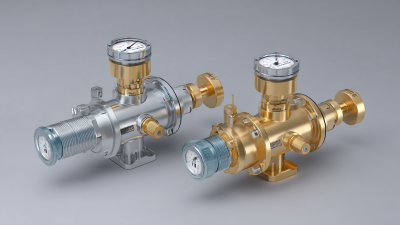
Leading the Global Market with China's Best Gas Pressure Regulator Innovations
-
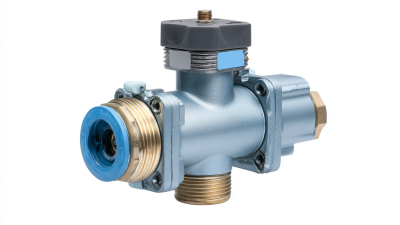
Embracing Industry 2025 Innovations for the Ultimate Water Pressure Regulator Valve Solutions
-
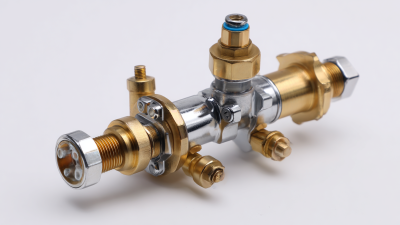
How to Identify Top Quality Manufacturers for the Best Pressure Regulator
-

15 Essential Insights About Control Valves for Global Buyers
-
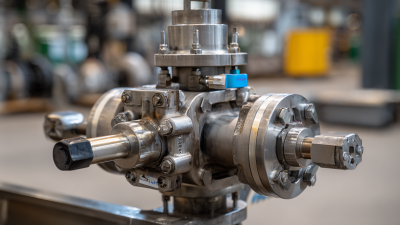
Understanding the Functionality of the Best Back Pressure Valve
-
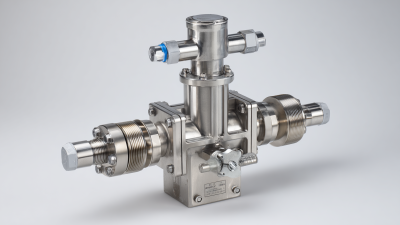
Common Issues Regarding Back Pressure Regulator Selection and Performance
